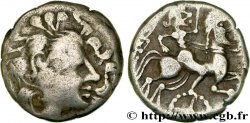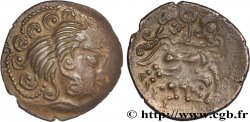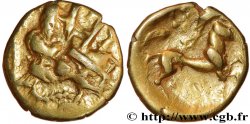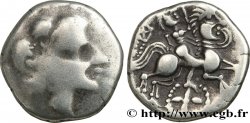bga_331439 - VENETI (Area of Vannes) Statère d’or blanc au sanglier en cimier, au personnage couché
Not available.
Item sold on our e-shop (2019)
Price : 3 500.00 €
Item sold on our e-shop (2019)
Price : 3 500.00 €
Type : Statère d’or blanc au sanglier en cimier, au personnage couché
Date: IIe siècle avant J.-C.
Mint name / Town : Vannes (56)
Metal : gold
Diameter : 21,5 mm
Orientation dies : 7 h.
Weight : 6,58 g.
Rarity : R3
Coments on the condition:
Monnaie atypique, frappée sur un flan un peu court et presque quadrangulaires, avec un éclatement de frappe. Magnifique avers centré et de frappe vigoureuse, mais revers légèrement décentré et de frappe molle et tréflée. Métal avec une teinte blanchâtre et des zones un peu jaunâtres, résultant d’un nettoyage agressif
Catalogue references :
Obverse
Obverse legend : ANÉPIGRAPHE.
Obverse description : Petite tête à droite, les cheveux en grosses mèches, un sanglier en cimier ; de la tête partent quatre cordons perlés, terminés chacun par une petite tête coupée.
Reverse
Reverse legend : ANÉPIGRAPHE.
Reverse description : Cheval androcéphale, bridé à droite ; au-dessus, l'aurige tient un lien ondulant relié à un étendard qui flotte devant la tête du cheval ; un personnage ailé sous le cheval.
Commentary
Le sanglier au droit détermine le classement de ce statère qui s’intègre à la série au sanglier en cimier. Le métal et le style sont pourtant différents des autres monnaies publiées pour cette série. La tête de l’androcéphale est particulièrement proche de certaines monnaies du trésor d’Hennebont, n° 66 par exemple.
Longtemps considérées comme étant en bon or, les monnaies vénètes sont pourtant parfois en électrum, voir en or blanc. La monnaie DT. 2112 en témoigne, avec un alliage virant vers le blanc, ou encore les monnaies d’Hennebont qui sont réattribiuées aux Vénètes, avec des teintes variées en passant par le blanc, le rose et le jaune....
Longtemps considérées comme étant en bon or, les monnaies vénètes sont pourtant parfois en électrum, voir en or blanc. La monnaie DT. 2112 en témoigne, avec un alliage virant vers le blanc, ou encore les monnaies d’Hennebont qui sont réattribiuées aux Vénètes, avec des teintes variées en passant par le blanc, le rose et le jaune....







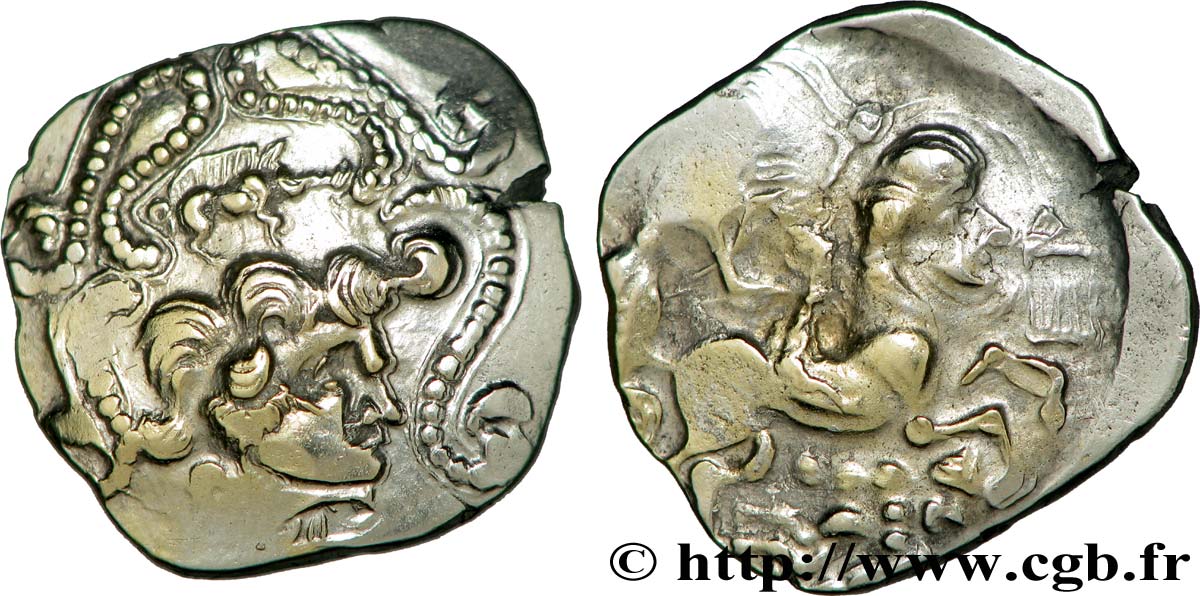
 Report a mistake
Report a mistake Print the page
Print the page Share my selection
Share my selection Ask a question
Ask a question Consign / sell
Consign / sell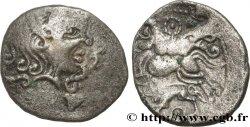
 Full data
Full data